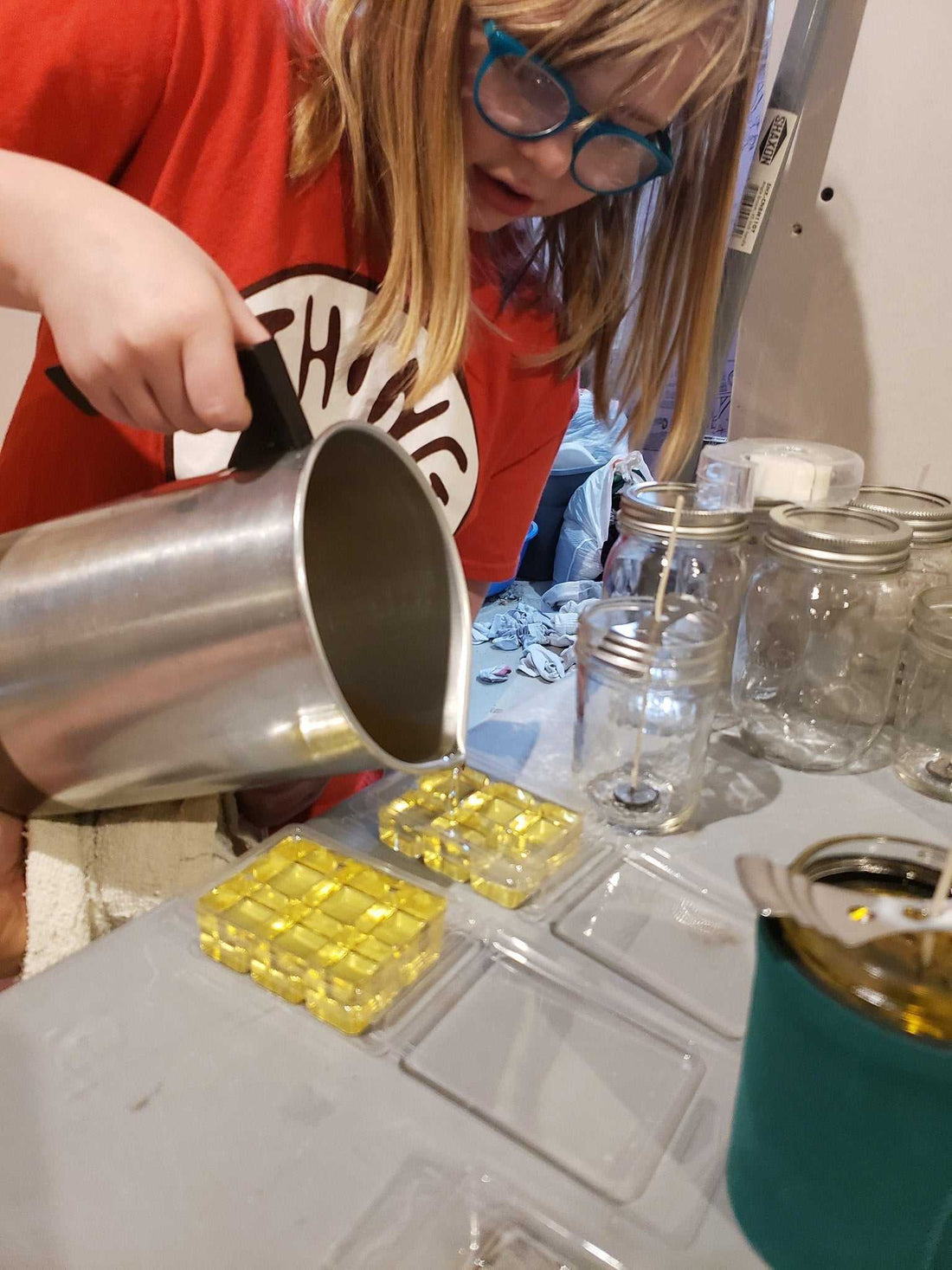
Scent Formulation - Candle Mixology
Share
Scent Formulation
The Art and Science of Blending the Unexpected
Crafting a fragrance is an intricate dance of art and science. While some scent pairings seem natural—like lavender and vanilla or citrus and herbs—others challenge the nose and imagination. The true magic of scent formulation comes when a skilled blender bridges the gap between two seemingly incompatible fragrances, transforming them into something new, balanced, and uniquely compelling.
Understanding Scent Families and Notes, The true meaning of Scent Formulation.
Before diving into unconventional pairings, it’s essential to understand scent families and how they interact. Fragrances are typically categorized into families such as floral, citrus, woody, spicy, fresh, and gourmand. Within each family, scents can be further broken down into top, middle, and base notes. You must have this understanding for proper scent formulation.
- Top Notes: The first impression of a fragrance—often light, fresh, and fleeting. Examples: bergamot, lemon, peppermint.
- Middle Notes: The heart of the scent, providing balance and complexity. Examples: jasmine, sage, black pepper.
- Base Notes: The foundation, adding depth and longevity. Examples: sandalwood, musk, amber.

Creating an extraordinary scent means balancing these notes harmoniously. But what happens when two scents seem at odds? That’s where creativity steps in.
Bridging the Gap Between Clashing Scents
Some scents naturally blend well due to their shared chemical compounds, while others require a middle ground to smooth the transition. Let’s explore a few unconventional pairings and the techniques that make them work in scent formulation:
-
Citrus and Leather
At first glance, the bright, zesty notes of citrus and the deep, rugged aroma of leather seem like opposites. However, a warm bridge note—like vanilla or tonka bean—can smooth the transition, adding a creamy richness that allows both elements to shine. -
Floral and Smoky
Pairing delicate florals like rose or lily with intense smoky notes (e.g., burnt wood, vetiver) may seem jarring. The secret? A touch of spice, such as saffron or pink pepper, which acts as a buffer, preventing the floral from being overwhelmed. A great example is our Fort Mackinac Soy Candle. -
Sweet and Earthy
Imagine caramel or honey alongside patchouli or vetiver. By adding a nutty or musky undertone—like almond or ambergris—you create an aromatic bridge that brings balance. -
Mint and Vanilla
Mint’s sharp coolness can feel too stark against vanilla’s creamy sweetness. A hint of lavender or eucalyptus can soften the contrast, creating a refreshing yet comforting blend. Our North Pole Soy Candle is crisp, yet smooth.
Choosing the Right Carrier and Container
Not all scents behave the same way in different mediums. The way a fragrance unfolds depends not just on its composition but also on what it’s carried in and stored within.
- Soy Wax vs. Paraffin Wax: Some fragrances, especially light citrus or herbal notes, can be muted in soy wax compared to paraffin. To retain their vibrancy, using a higher concentration or a natural fixative like beeswax can help.
- Glass vs. Tin Jars: Amber or black glass preserves delicate essential oils better than clear glass, which can lead to faster oxidation. Tin containers work well for earthy or resinous scents, as they tend to warm up faster, releasing fragrance more intensely.
- Oil-Based vs. Alcohol-Based: Oil-based perfumes tend to have a softer, more intimate scent throw, while alcohol-based perfumes project farther. Some ingredients, like musks and woods, bloom more in oils, whereas bright florals and citruses thrive in alcohol.
Creating a Signature Scent
For those looking to develop something truly unique, experimentation is key. Here’s a structured approach to building a scent from scratch:
-
Choose a Dominant Theme
Decide on a primary scent category (woody, floral, citrus, etc.) as your base. -
Select a Complementary Contrast
Pick an element that challenges the base—something unexpected but intriguing. -
Find the Bridge Notes
Identify one or two scents that can link the two main components smoothly. -
Test and Adjust
Blend small batches, let them rest (fragrances evolve over time), and tweak as needed. Not every scent formulation is a winner... be ok with cutting your losses and aborting the combo. -
Consider the Medium
Choose the best format—candle, body oil, solid perfume—to enhance the final result.
The Future of Fragrance Innovation
As perfumers push boundaries, new scent combinations are emerging—savory elements like basil and sage in sweet blends, or metallic notes paired with warm resins. The industry is also exploring natural and sustainable fixatives to enhance longevity without synthetic additives.
By mastering the art of scent formulation, blending the unexpected, and understanding how different scents interact, creators can develop fragrances that surprise, captivate, and redefine what’s possible in the world of aroma. The key lies in experimentation, balance, and an adventurous nose willing to push beyond the conventional.
What bold scent combination will you try next? Take a look at our unique blends and try something a little different from the normal everyday vanilla or lilac candle. When it comes to Scent Formulation, we know a thing or two about different!
